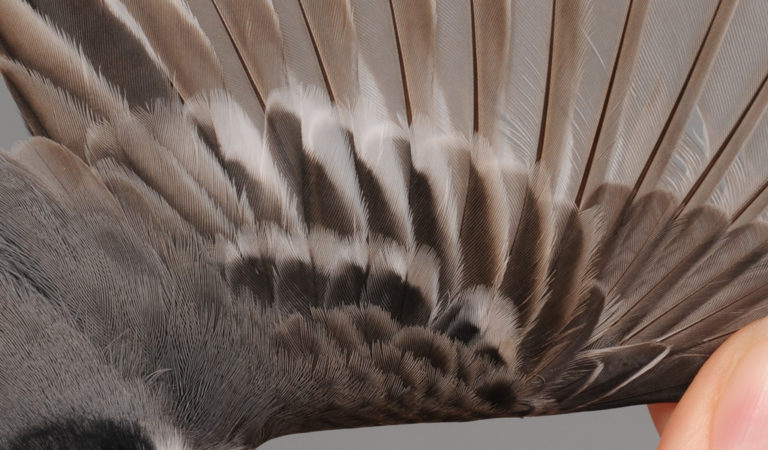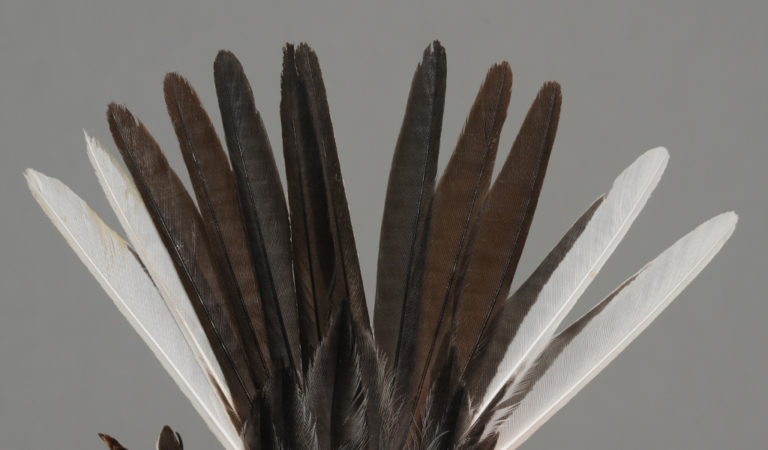

White Wagtail
AGE – BEST CRITERIA:
Individual differences in wear and moult makes ageing problematic at times. Moult contrasts are often present in LC, MC, GC, tail and TT in both age classes, and should be examined carefully.
2cy:

3cy+ April. Note the contrast betwen fresh inner pre-breeding GC4-10 (with dark blackish-grey centre with broad grey to greyish-white edges and tips) and intermediately worn outer post-breeding GC1-3 (which have the same basic pattern but has bleached to medium grey and have worn off some of the white in the edges/tips). Note also the inner three GC with a slightly different pattern, creating a 'false contrast'. [1ET29450]

2cy May. Tails may be rather difficult to assess (esp. separation of pre-breeding and post-breeding/post-juvenile generations, which all can be rather variable in wear). However, separating the mentioned generations is not necessary - it is only the presence of juvenile feathers that help the ageing process (proves the bird as 2cy). In this bird, R3-4 (both sides) and left R5 are juvenile, while the rest, R1-2 (both sides), right R5 and both R6, are either post-juvenile or pre-breeding. [1ES24630]
Ringers’ DigiGuide is sponsored by: